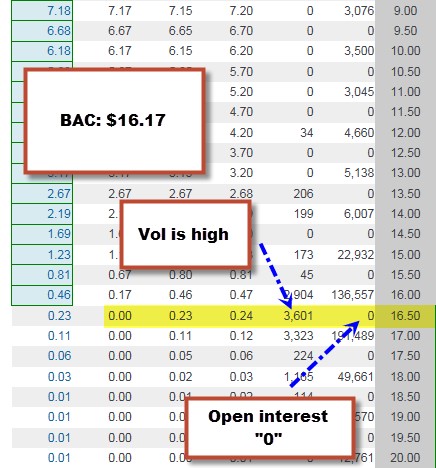Contents:


In bottom-up top down and bottom up approach in testing on the other hand, the process starts with elementary modules and then combining together to get the desired result. Let us now quickly see in brief what these two approaches has to offer, how they differ from each other and what are the similarities. In an Agile or DevOps environment where continuous delivery pipelines are common, integration testing should be carried out as each module is completed or adjusted. For example, in many continuous delivery pipeline environments, it’s not uncommon to have multiple code deployments per developer per day. Running a quick set of integration tests at the end of each development phase prior to deployment should be a standard practice in this type of environment.
- Many a time developer deploys the changes without unit testing it.
- In the top-down approach, the development process begins with a high-level design of the system, which is then broken down into smaller, more manageable modules.
- Incremental approach as the name suggests is followed in ascending order.
- An even incremental approach is a form of integration testing.
Below is a conclusive list of the industries that embody certain administration styles over others. There are many industries that benefit from this holistic fashion of enterprise management. These customers embody using a pieced collectively system that creates a more knowledgeable, complicated firm with focused targets.
In bottom up approach, we solve smaller problems and integrate it as whole and complete the solution. S.NO.TOP DOWN APPROACHBOTTOM UP APPROACH1.In this approach We focus on breaking up the problem into smaller parts. The top-down approach goes from the general to the specific, and the bottom-up approach begins at the specific and moves to the general. The top-down approach may not be as effective for projects that require a lot of creativity and innovation, as it can be inflexible and leave little room for experimentation. With so many pieces and components, it can be challenging to keep track of everything and ensure that everything is working together as intended.
What are Stubs in Topdown Approach?
Once the system has been divided into smaller components, each component can be developed individually. Next, the system is broken down into smaller, more manageable components or modules. It is often more efficient, as it focuses on the most fundamental and necessary components first, rather than trying to build a complete system all at once. Move from part to wholeas it is a listening process that focuses on decoding messages moving from sounds to words, phrases, clauses, and other grammatical elements to sentences.
Usage Model testing takes an optimistic approach to testing, because it expects to have few problems with the individual components. The strategy relies heavily on the component developers to do the isolated unit testing for their product. The goal of the strategy is to avoid redoing the testing done by the developers, and instead flesh out problems caused by the interaction of the components in the environment. For integration testing, Usage Model testing can be more efficient and provides better test coverage than traditional focused functional integration testing. To be more efficient and accurate, care must be used in defining the user-like workloads for creating realistic scenarios in exercising the environment.
Define the overall system requirements:
This method also helps to determine the degrees of software developed and makes it simpler to report testing progress within the form of a share. (sometimes called integration and testing, abbreviated I&T) is the phase in software testing in which individual software modules are combined and tested as a group. A type of Big Bang Integration testing is called Usage Model testing. Usage Model testing can be used in both software and hardware integration testing. The basis behind this type of integration testing is to run user-like workloads in integrated user-like environments. In doing the testing in this manner, the environment is proofed, while the individual components are proofed indirectly through their use.
Why it is Important to Measure the Uncertainty of Spark Measurements – AZoM
Why it is Important to Measure the Uncertainty of Spark Measurements.
Posted: Fri, 10 Mar 2023 08:00:00 GMT [source]
Top Down Integration testing is one of the approach of Integration testing in which integration testing takes place from top to bottom means system integration begins with top level modules. Log as Much as Possible – If a problem arises during a unit test, it’s fairly easy to identify the cause and fix the issue. But because of the scope and complexity of integration tests – usually spanning several modules and hardware components – identifying the cause of an integration failure is much more difficult. Logging helps you better analyze the failure and maintain a record of potential reasons for the failure, as well as ruling out other reasons, narrowing down the true cause.
UGC NET CSE | January 2017 | Part 3 | Question: 44
The process continues until all of the modules are joined and tested successfully. Another option to consider is a solution originally developed around 2002, called Service Virtualization. This creates a virtual environment, simulating module interaction with existing resources for testing purposes in a complex enterprise DevOps or Agile environment. Some different types of integration testing are big bang, top-down, and bottom-up.

After the integration testing of lower level integrated modules, the next level of modules will be formed and can be used for integration testing. This approach is helpful only when all or most of the modules of the same development level are ready. This method also helps to determine the levels of software developed and makes it easier to report testing progress in the form of a percentage. The course of is repeated until the component at the high of the hierarchy is tested.
Top Down Testing is an approach to integrated testing where the top integrated modules are tested and the branch of the module is tested step by step until the end of the related module. The engineering and administration success of this challenge led to the spread of the top-down method by way of IBM and the rest of the computer trade. Among different achievements, Niklaus Wirth, the developer of Pascal programming language, wrote the influential paper Program Development by Stepwise Refinement. Since Niklaus Wirth went on to develop languages corresponding to Modula and Oberon , one can infer that prime-down programming was not strictly what he promoted.
The primary https://1investing.in/ of the bottom-up approach is testing as each fundamental module is first tested before merging it to the bigger one. The testing is accomplished using certain low-level functions. This is a different approach to the traditional development where you write the application functionality first andthen write test cases.

In unit testing each feature of software is tested in a solo test along with the devices. While in integration testing the device and features are tested in groups. In this testing the lower level modules are tested first then the higher level modules are tested and then the modules are integrated accordingly. In this testing the higher level modules are tested first then the lower level modules are tested and then the modules are integrated accordingly. In this design, individual parts of the system are specified in details.
Has been regarded as a technique to train pupils to listen carefully, concentrate for the time being and retain what is being spoken, and reproduce it in good handwriting at a reasonable speed. The four basic language skills and their natural order are listening-speaking-reading-writing. These foundational skills of language are divided into two categories which are receptive and productive skills. First, determine the Integration Test Strategy that could be adopted and later prepare the test cases and test data accordingly. Please enable JavaScript in your browser to complete this form. The main advantage of the Bottom-Up approach is that bugs are more easily found.
The top-down testing strategy checks the details of the software. It deals with the process in which higher level modules are tested with lower-level modules. This approach helps in detecting the major design flaws and defects.
New rules for automotive product design and development – McKinsey
New rules for automotive product design and development.
Posted: Mon, 24 Oct 2022 07:00:00 GMT [source]
This is done to ensure broken code isn’t being committed to the mainline. If their test suite takes a long time to finish — and unit tests should happen quickly — they may end committing bad code or stop running tests altogether. This can also lead to a situation where unit tests are not properly maintained. Stubs are computer programs that act as temporary replacement for a called module and give the same output as the actual product or software.
These can involve checking behaviors for web services, database calls, or other API interactions. In computer science,test stubsare programs that simulate the behaviors of software components that a module undergoing tests depends on. This course of allows the company to determine its most focused — and most applicable — targets. Bottom-up communication is usually referred to as the seed mannequin, as small ideas from every employee develop into advanced, organic targets that result in eventual successes. In a sense, there’s a merging of staff and each of their roles into a broader focus dealing with the entire company. This forward-trying method considers every side of a company by taking within the respective staff’ inputs to make a greater determination for the whole company.
The top-down approach will seek to identify the big picture and all of its components. These components will usually be the driving force for the end goal. Breaking down the big picture into smaller pieces can take a lot of time, especially if the design is complex. 4- Returns the values selected by the parameters that were used by modules being tested.
The Five Stages of DEI Maturity – HBR.org Daily
The Five Stages of DEI Maturity.
Posted: Mon, 17 Oct 2022 18:34:36 GMT [source]
Our passive vocabulary is smaller than our active vocabulary. Teachers should increase the repertoire of both active and passive vocabulary of students. Select the level of comprehension questions which helps most in developing a learner’s critical faculties. Are necessary for effective communication in any environment and to interact with others. It allows an individual to comprehend and produce language for proper and effective interpersonal communication. Critical modules which control the flow of application are tested last and may be prone to defects.
Both styles distinguish between high level and low stage work, but how each management styles achieves this course of varies broadly. The top-down approach relies on larger authority figures to determine larger goals that will filter down to the duties of decrease degree staff. White box testing tests the internal coding and infrastructure of the software. It is done to check the predefined inputs against expected and desired outputs. White box testing is to find and spot the inner workings of the software. But it requires several programming skills to design test cases.
Incremental approach as the name suggests is followed in ascending order. Modules are arranged in one-by-one order as per the need and requirements. If you find any bugs in the program, report to the programmer and developer to fix the defects. This Sandwich approach overcomes this shortcoming of the top-down and bottom-up approaches. Mixed approach is useful for very large projects having several sub-projects. In this testing, the complexity that occurs when the system is made up of a large number of a small subsystem.

